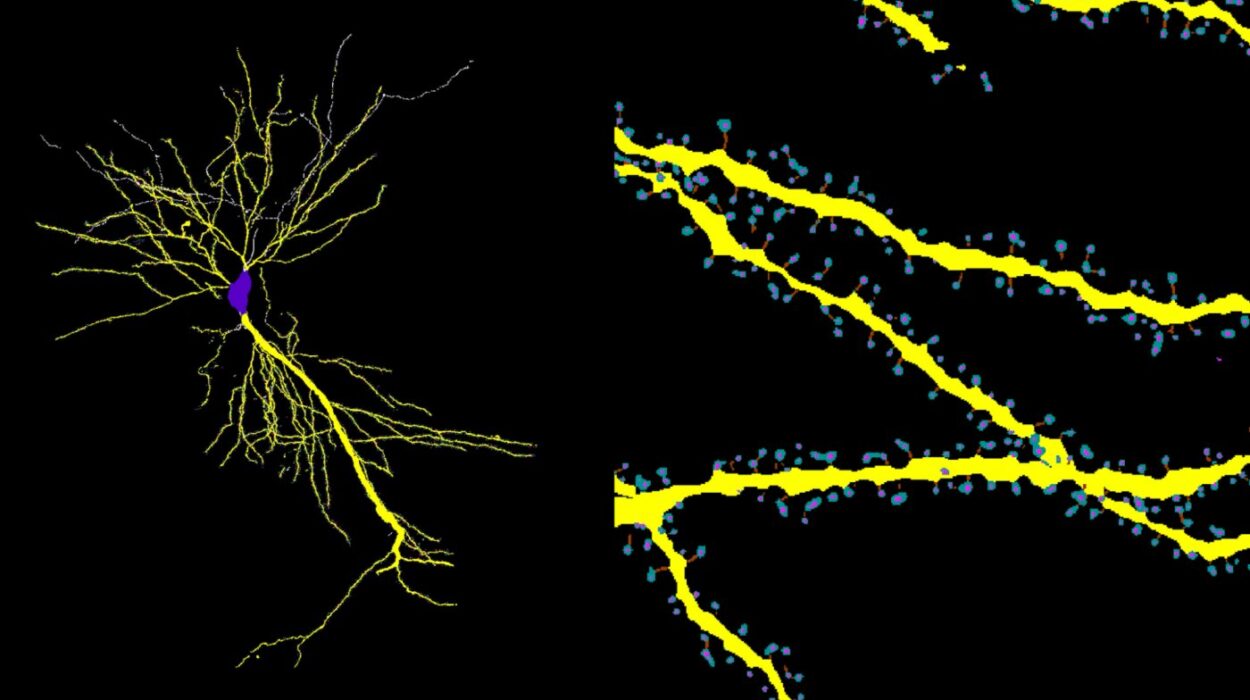Inside your body, there’s a silent orchestra playing every moment of your life. Hormones are the conductors—tiny chemical messengers with immense power, dictating everything from your sleep and energy levels to your mood, metabolism, and reproductive health. When they’re in harmony, your body hums with vitality. But when they fall out of tune, the effects ripple through your entire being. Fatigue creeps in. Skin flares up. Emotions become unpredictable. Cycles shift, and stress magnifies. Balancing hormones isn’t just a matter of reproductive health or weight control—it’s foundational to your entire wellbeing.
And while modern medicine offers many routes—prescriptions, synthetic hormones, therapy—one of the most powerful, long-term solutions is deceptively simple. It’s the food on your plate.
Food as Medicine: Where Science Meets Your Fork
Every bite you take carries information. Your food doesn’t just fuel your body—it talks to your cells. Certain nutrients can soothe inflammation, stabilize blood sugar, improve gut health, and support your endocrine system—the network of glands that produce and regulate hormones. In a world where our plates are increasingly dominated by ultra-processed meals, sugar bombs, and empty calories, hormonal imbalances are becoming more common. But just as food can be the problem, it can also be the cure.
Whole foods rich in specific vitamins, minerals, phytonutrients, and healthy fats have been shown to naturally support hormone production and detoxification. The goal is not to follow a strict, joyless diet but to cultivate a nourishing, vibrant way of eating that keeps your internal symphony in balance. Whether you’re dealing with PMS, PCOS, thyroid issues, menopause symptoms, adrenal fatigue, or just want to feel more emotionally and physically stable, the right foods can make a profound difference.
The Blood Sugar Connection: Stabilizing the Foundation
The first place to begin when it comes to hormone health is blood sugar. Many people don’t realize that every blood sugar spike and crash sends a signal to your endocrine system. When you consume refined carbohydrates, sugary beverages, or processed snacks, your blood sugar rises quickly. In response, your pancreas pumps out insulin, a hormone tasked with ferrying that sugar into cells.
If this pattern happens often, your cells become resistant to insulin, forcing your body to produce more of it. This can wreak havoc on your hormonal balance. Elevated insulin can increase androgens (male hormones) in women, leading to symptoms like acne, irregular periods, and unwanted hair growth. It can also suppress ovulation, contributing to infertility. And beyond reproductive hormones, this constant blood sugar rollercoaster disrupts cortisol (your stress hormone), estrogen, and progesterone levels.
The key to breaking the cycle is choosing foods that slow the absorption of sugar into your bloodstream. That means reaching for meals rich in fiber, protein, and healthy fats—whole food combinations that nourish rather than destabilize.
The Fat You Eat Becomes the Hormones You Make
For decades, fat was demonized. Low-fat labels flooded grocery stores, and many people believed that avoiding dietary fat was the golden ticket to health. But here’s the truth: your body cannot make hormones without fat. Cholesterol and saturated fat are the building blocks of steroid hormones, including estrogen, progesterone, testosterone, and cortisol. Without enough fat, your endocrine system cannot function optimally.
Of course, not all fats are created equal. Trans fats and highly processed oils found in fast food and packaged snacks are inflammatory and hormone-disrupting. But unrefined fats from nature—like those found in avocados, extra virgin olive oil, nuts, seeds, and fatty fish—are anti-inflammatory and deeply supportive of hormone production.
Omega-3 fatty acids, in particular, deserve special attention. Found abundantly in cold-water fish like salmon, sardines, and mackerel, as well as in chia seeds and flaxseeds, omega-3s help modulate inflammation and support brain function, both of which are tightly linked to hormonal health. They also play a critical role in supporting the menstrual cycle and reducing symptoms of PMS and perimenopause.
Gut Health and Hormones: The Unseen Connection
Your gut is more than a digestion center—it’s a hormone processing hub. The health of your microbiome (the trillions of bacteria living in your gut) has a direct influence on hormone levels, especially estrogen. There’s a subset of gut bacteria, collectively known as the estrobolome, that metabolizes and regulates circulating estrogen. When your gut bacteria are diverse and balanced, estrogen is efficiently broken down and eliminated from the body. But when the gut is compromised—due to antibiotics, processed food, stress, or alcohol—estrogen metabolism can go haywire, leading to excess estrogen, or estrogen dominance.
Estrogen dominance is one of the most common hormone imbalances in women today and can result in heavy periods, mood swings, weight gain, breast tenderness, and even increased risk of hormone-related cancers.
Eating fiber-rich foods is one of the most effective ways to keep your gut and your estrobolome in balance. Vegetables, fruits, legumes, and whole grains feed the beneficial bacteria, which in turn helps your body detoxify excess hormones. Fermented foods—like sauerkraut, kimchi, kefir, and plain yogurt—add good bacteria to your system, enhancing your ability to metabolize estrogen and support overall endocrine function.
The Power of Cruciferous Vegetables
There’s a particular family of vegetables that deserves the spotlight when it comes to hormone health: the cruciferous group. This includes broccoli, cauliflower, cabbage, kale, Brussels sprouts, and bok choy. These vegetables contain a compound called indole-3-carbinol, which helps the liver convert estrogen into a safer, more easily excretable form.
When estrogen isn’t properly broken down, it can be reabsorbed into the bloodstream and accumulate in the body. This contributes to symptoms of estrogen dominance and creates hormonal turbulence. Cruciferous vegetables are like the body’s brooms—sweeping away excess hormones and helping your system stay clear and balanced.
Moreover, these veggies support liver detoxification. Since your liver is responsible for breaking down and eliminating hormones, keeping it in top shape is critical. Crucifers are rich in sulfur-containing compounds that activate Phase I and Phase II detoxification pathways, ensuring that hormones don’t linger in the body longer than necessary.
Protein: A Balancing Act
Protein plays a starring role in hormone health, but its impact goes beyond muscle maintenance. Every hormone in your body is made from amino acids—the building blocks of protein. Without enough dietary protein, your body struggles to produce the right amount of these essential messengers.
Protein also stabilizes blood sugar and prevents the insulin spikes that contribute to hormonal chaos. When combined with fiber and fat, it slows digestion, keeps you feeling full longer, and reduces cravings that might otherwise lead to hormone-disrupting eating patterns.
Choosing high-quality protein sources is essential. Grass-fed meats, wild-caught fish, organic eggs, legumes, tempeh, and quinoa offer clean, nutrient-rich protein without the added hormones and antibiotics often found in conventional meat products. Additionally, pairing plant-based proteins with vitamin C-rich foods helps increase iron absorption, which is particularly important for menstruating women.
The Role of Minerals: Magnesium, Zinc, Selenium, and Iodine
Micronutrients often get overshadowed by macronutrients like protein and fat, but when it comes to hormones, minerals are the unsung heroes. Magnesium, for example, is required for over 300 biochemical reactions in the body, including those involved in hormone synthesis. It calms the nervous system, reduces cortisol levels, and supports thyroid health.
Zinc is another powerhouse, essential for progesterone production and for supporting the reproductive system. Low zinc levels can contribute to irregular cycles and poor egg quality. It’s found in foods like pumpkin seeds, lentils, shellfish, and grass-fed beef.
Selenium is crucial for thyroid function, helping to convert inactive thyroid hormone (T4) into its active form (T3). Brazil nuts are one of the best sources of selenium—just one or two nuts a day provide your full daily requirement.
Iodine, though needed only in small amounts, is essential for the production of thyroid hormones. Seaweed, iodized salt, and dairy products are common sources, though caution is warranted—too much iodine can be just as harmful as too little.
Cortisol, Stress, and Adaptogens from the Earth
In the modern world, stress is practically a food group. Chronic stress leads to elevated cortisol, which disrupts nearly every other hormone. High cortisol levels can suppress thyroid function, decrease progesterone, increase belly fat, and cause insulin resistance.
Certain foods and herbs can act as natural adaptogens, helping the body manage stress more effectively. Maca root, an ancient Peruvian tuber, has been shown to support the hypothalamic-pituitary-adrenal axis and promote hormonal equilibrium, especially during perimenopause and menopause. Ashwagandha is another adaptogen that helps reduce cortisol levels and supports thyroid function.
These aren’t magic pills, but when included as part of a hormone-supportive diet, they offer gentle but powerful assistance in helping your body adapt to life’s many stressors.
Sleep, Melatonin, and Food
Hormones don’t only rise and fall with the moon—they’re directly influenced by your sleep patterns. Poor sleep disrupts the production of melatonin, insulin, cortisol, and even hunger hormones like ghrelin and leptin. One of the simplest ways to support your sleep and hormones is to align your eating with your circadian rhythm.
Eating late at night, especially heavy meals or sugar-laden snacks, can suppress melatonin and disrupt sleep quality. On the other hand, foods like cherries, kiwi, almonds, and oats naturally contain melatonin or support its production.
Avoiding caffeine and alcohol late in the day also helps restore hormonal sleep rhythms. Sleep is when your body repairs, regulates, and detoxifies. Giving it the nourishment and time it needs is one of the most profound acts of hormone healing you can practice.
Cycle Syncing and Seasonal Eating
One of the most fascinating and empowering ideas in hormone nutrition is the concept of cycle syncing—eating in alignment with the phases of your menstrual cycle. Each phase (menstrual, follicular, ovulatory, and luteal) comes with different hormonal shifts and nutritional needs. For example, during the follicular phase, your body craves lighter, fresh foods, while in the luteal phase, it needs more complex carbohydrates and warming meals to support progesterone production.
Similarly, eating with the seasons ensures that your body gets a wide variety of nutrients and supports natural detox pathways. Nature often gives us what we need when we need it: cruciferous vegetables in the spring to detoxify, antioxidant-rich berries in summer, grounding root vegetables in the fall, and immune-boosting produce in winter.
A Lifestyle of Hormonal Nourishment
Ultimately, supporting your hormones through food isn’t about deprivation or perfection—it’s about creating a nourishing lifestyle rooted in awareness. It’s about listening to your body’s cues, honoring your cravings in a balanced way, and choosing whole, living foods as often as you can. It’s about recognizing that your hormones are not your enemy but your allies, constantly working to protect, restore, and balance your inner world.
In a society that often pathologizes women’s bodies, especially during menstruation, pregnancy, and menopause, food can become a powerful tool of self-advocacy and care. Hormonal health isn’t reserved for specialists or biohackers—it begins at the grocery store, in your kitchen, and on your plate.






